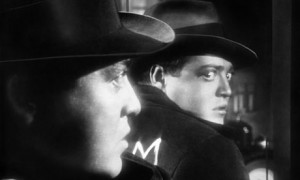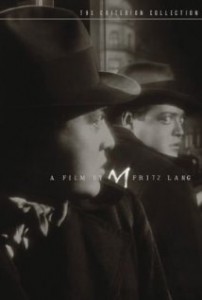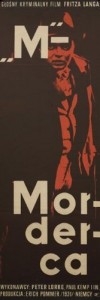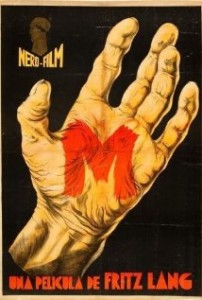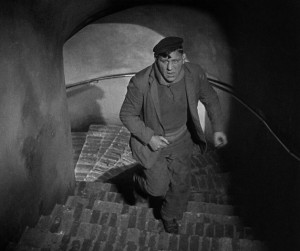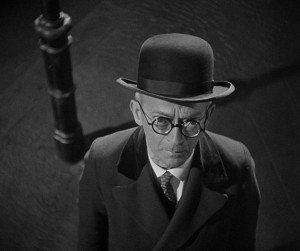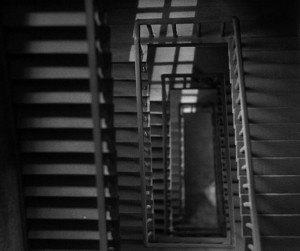M ***** (1931, Peter Lorre) – Classic Movie Review 16
Peter Lorre’s star-making début is showcased in Fritz Lang’s still mint-fresh and relevant, 1931 classic crime thriller, with an intelligent, thought-provoking script developing a particularly troubling and deeply disturbing story. It’s deservedly famous as the first great movie about a serial killer. And now it’s brilliantly restored in a flawless 111-minute version that is considerably longer than earlier prints.
Berlin is being turned upside down as the police search for an elusive serial killer of young girls. The Government Minister urges the police to give the manhunt their all but their painstaking investigations aren’t getting anywhere much and they haven’t been able to arrest the serial killer. But the intense police search and siege of the city are seriously getting in the way of business for the local professional criminals, whose organized crime is suffering great losses. So they decide to join in the manhunt and chase the murderer themselves by getting the local beggars’ association involved and not involve the police.
Despite many marvellous later performances, Lorre is perhaps at his most memorable here as Hans Beckert, the pathetic, pitiful but dangerous Berlin child-murderer, modelled after a real killer, Duesseldorf’s Peter Kuerten. Beckert whistles Edvard Grieg’s In The Hall of the Mountain King, from the Peer Gynt Suite I Op. 46 while attracting little girls to kill, luring them with sweets and the balloons he can buy from a blind beggar. It’s all very creepy with the whistling and the balloons – but it’s going to prove his downfall.
Lang and his co-writer Thea von Harbou painstakingly show the details of the processes of how the cops try to track Beckert down and his eventual capture by the beggars and the underworld criminals who take the law into their own hands by putting him on trial in a kangaroo court themselves.
Sparked by Lang and von Harbou’s unique insight into the general criminal mind and the particular milieu of the time and place, M still casts its awesome spell. For this, much thanks goes to the utterly compelling story, eye-catching visuals, brio camera techniques, striking imagery, inventive use of sound and spooky atmosphere – as well as to the unforgettable Lorre, who makes the killer a pitiable terrified animal driven to kill and wracked with inner torment.
The screenplay is co-authored by actress and writer Thea von Harbou (1889-1954), who also helped Lang write his other most celebrated films: Dr. Mabuse: The Gambler (1922), Siegfried (1924) and Metropolis (1927). They married in 1922 but divorced in 1933.
Nazi propaganda minister Josef Goebbels described the film as ‘fantastic, free of phony humanitarian sentiments’. In 1933 he offered Lang the job of head of the German Cinema Institute.
But Lang, a Catholic anti-Nazi, rejected it and, after secretly sending his money out of the country, fled Germany to Paris, then to the US. Wisely so. His mother, Pauline Schlesinger, was Jewish but converted to Catholicism when Lang was ten.
M was remade to much less effect by Joseph Losey in 1951.
http://derekwinnert.com/m-1951-classic-film-review-772/
http://derekwinnert.com/metropolis-classic-film-review-56/
http://derekwinnert.com/secret-agent-classic-film-review-385/
http://derekwinnert.com/casablanca-classic-film-review-1/
© Derek Winnert 2013 Classic Movie Review 16
Check out more reviews on http://derekwinnert.com/

